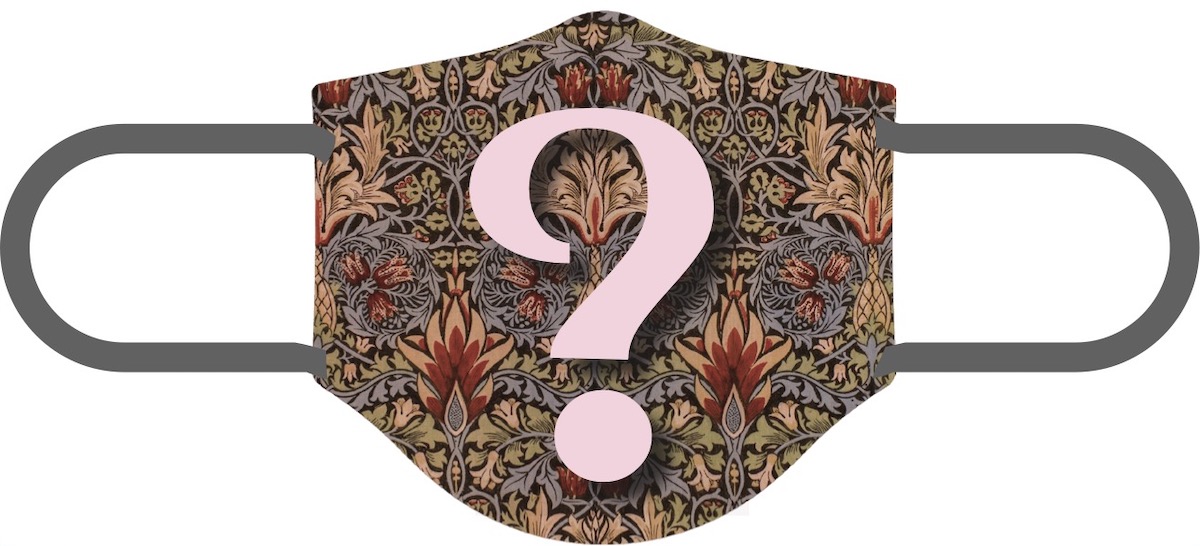Are all masks effective in preventing the spread of COVID-19?
Beginning on May 1, Illinois’ modified stay-at-home order takes effect until May 31. Within the updated order, Governor J.B. Pritzker announced that individuals will now be required to wear masks or face-coverings in public indoor spaces, such as stores. This regulation applies to all individuals over the age of two who are able to medically tolerate the request.
It is already widely known that the Centers for Disease Control and Prevention (CDC) has recently changed their stance on the use of homemade cloth masks or coverings and now advocates to the public to use such coverings in areas where social distancing measures are difficult to maintain in order to slow the spread of the coronavirus.
Though the question is, are homemade masks or coverings just as effective as surgical masks or N-95 respirators at preventing the spread of COVID-19?
While there are few studies showing the effectiveness of homemade masks, the consensus among several health departments and experts remains the same in stating that personal protective equipment (PPE) including N-95 masks and other medical gear currently in short supply, should be left for healthcare providers and first responders on the frontlines of the battle against COVID-19.
Dr. Laura Buthod, a medical advisor for the McHenry County Department of Health (MCDH), stated that the problem with homemade masks is that it gives people a false sense of security against the virus.
“You could still touch your mouth or eyes with contaminated gloves and spread the virus to yourself. As we have been stating over and over again, staying home, washing your hands effectively for 20 seconds, and keeping a six-foot social distance when you must be out are the most effective strategies for preventing infection,” Buthod said in a public statement.
Buthod emphasizes that the use of homemade masks is reasonable when in the community as long as they are made and used correctly.
“Good hand hygiene should be performed before putting on a mask, and after touching, adjusting or removing a mask. Facemasks should be removed and discarded if soiled, damaged or hard to breathe through,” she said.
Statement from Deputy Police Chief Michael Klunk on Illinois mask ordinance in Huntley
“We’ll do whatever we can do to help local businesses if it comes down to them having any issues with residents not wanting to follow their rules. Ultimately, it’s going to be up to the businesses and the property owners on how they want to enforce the mask ordnance, so there may or may not be any issues with that.”
“What we, as a police department, are trying to enforce is reiterating to the public the intent of wearing face coverings. It’s an unfortunate time and we’re all trying to get back to normal and trying to be safe.”
According to a study done by Paddy Robertson, CEO of Smart Air, a company that produces air purifies and provides education to combat the impacts of air pollution, thick coffee filters and blue nylon proved to be the best materials at filtering out larger (1-micron) and smaller (0.3-micron) particles (coronavirus measures 0.06-0.14 microns by itself), though these materials are almost impossible to breathe through.
Robertson, who also holds a Master’s degree in aeronautical engineering, states that based on a combination of breathability and filtration effectiveness, the best materials for homemade masks include: 10-ounce denim, bed sheets (80-120 thread count), paper towel, canvas (0.4 millimeters thick) and shop towels.
“However, if you don’t have thicker fabrics at home, our data shows that double layers of 100 percent cotton T-shirts are still effective options for homemade masks,” Robertson explains in the Smart Air study.
When in doubt of the quality of homemade masks or coverings, researchers suggest conducting the light test. This process involves holding up a fabric to the light to check to see if the individual fibers are visible. If they are, then it’s likely that the fabric is too thin to provide adequate protection.
Studies also suggest using multiple layers of natural fabric to construct masks over synthetic material because the roughness and irregularity of the fibers in natural fabrics boost their filtering capabilities. Keep in mind, that some of the worst natural fabrics to use, according to Smart Air, include wool, cashmere and ramie (similar to linen).
Ultimately, studies on the subject demonstrate that using homemade face coverings will protect others by decreasing the spread of respiratory droplets to some degree. More importantly, homemade masks are not intended to fully protect the user against the virus. The purpose of wearing face coverings in public is to prevent asymptomatic carriers from further spreading the disease.
“The key messages [are], continue to stay home except for essential tasks, wash your hands, and frequently clean surfaces. If you must go to the grocery store or work, and you are well, using a homemade mask or bandana will help protect others,” Buthod said. “Use of these masks however, will not mean you are safe from [the] germs around you. Keep your six-feet distancing from others, use your hand sanitizers, and don’t touch your mask or any part of your face. If you have any symptoms, you must stay home.”
Editor Note: In addition to Michelle’s outstanding reporting on this topic, it’s imperative to note that research suggests cloth masks/face coverings do very little to keep the wearer safe, especially those fashioned from old T-shirts or similar cotton thread count. According to a 2015 study conducted at 14 hospitals in Hanoi, Vietnam, cloth face coverings possibly posed an increased risk of infection among wearers, if not properly used.





1 Comment
Here are the results of the study and a safe mask to make designed by a doctor and his wife that uses material that will protect you from the virus unlike cotton. www.youtube.com/watch?v=W6d3twpHwis
www.ncbi.nlm.nih.gov/pmc/articles/PMC4420971/